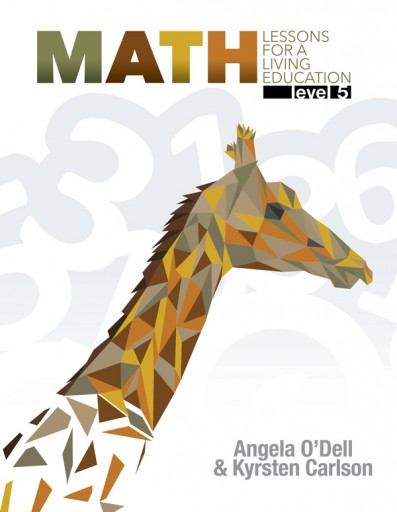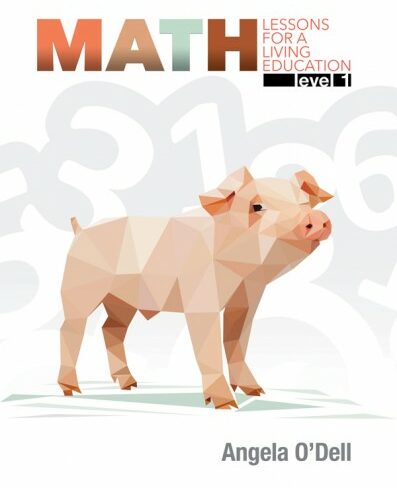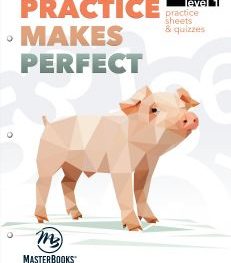Learn Smarter
Students learn best and retain more when they are engaged in the material and actively applying concepts to everyday life—Math Lessons for a Living Education Level 5 engages your student through exciting stories and teaches them how to apply mathematical concepts through everyday life situations—allowing your student to learn smarter instead of harder!
Math Lessons for a Living Education teaches through:
Short, story based lessons
Real life application
Hands-on activities
Engaging, full-color worksheets
Math Students Love
Math is happening all over everyday life–and it’s so much fun! In Math Lessons for a Living Education Level 5 Charlie, Charlotte, Natty, and Hairo have grown closer as a family and your student follows along as they embark on earning money and managing it responsibly, helping with their church’s VBS program, volunteering around the community, and planning a family fiesta all while learning key math concepts!
This engaging, story based approach puts math into context for your student as they student build connections between mathematical concepts and their own lives—learning both how to do math, and how to apply it to life outside the textbook.
A Unique Approach to Learning
A blend of stories, copy-work, oral narration, and hands-on experience brings the concepts to life, invites the student to explore the world around them, and gives this course a Charlotte Mason flavor.
In Math Lessons for a Living Education Level 5 your student will learn:
Factoring
2 Digit Divisors
Proper & Improper Fractions
Common Denominators
Multiplying & Dividing Decimals
and so much more!
Math Lessons for a Living Education Level 5 Includes:
Convenient Daily Schedule—saving you time!
Short, engaging 15-30 minute lessons
Full-color worksheets
Answer key
Manipulatives section
Course Features:
Instructional blend of stories, copy work, oral narration, and hands-on experience to bring concepts to life
Convenient perforated pages
Recommended for: Grade 5 / 9 – 11 years old
Table of Contents
Using this Course
Schedule
Lesson 1: Review of All Addition and Subtraction
Lesson 2: Review of All Division and Multiplication
Lesson 3: Review of All Geometry
Lesson 4: Review of All Measurement
Lesson 5: Review of All Fractional Concepts
Lesson 6: Review of All Decimal Concepts
Lesson 7: 10, 100, 1,000 (multiplying/dividing)
Lesson 8: Introduction to 2 Digit Divisors
Lesson 9: More Work with Division
Lesson 10: Three Ways of Division/Remainders as Fractions
Lesson 11: Review!
Lesson 12: Factoring
Lesson 13: Common Factors, Greatest Common Factor, and Reducing Fractions
Lesson 14: Proper and Improper Fractions
Lesson 15: Changing Improper Fractions
Lesson 16: Sums Containing Improper Fractions
Lesson 17: Least Common Multiples
Lesson 18: Least Common Multiples/Finding a Common Denominator (Part 1)
Lesson 19: Least Common Multiples/Finding a Common Denominator (Part 2)
Lesson 20: Adding Fractions and Mixed Numbers with Uncommon Denominators
Lesson 21: Subtracting Fractions and Mixed Numbers with Uncommon Denominators
Lesson 22: Adding and Subtracting Mixed Numbers with Common Denominators
Lesson 23: Adding Mixed Numbers with Uncommon Denominators
Lesson 24: Subtracting Mixed Numbers with Uncommon Denominators
Lesson 25: Review!
Lesson 26: Multiplying Fractions
Lesson 27: Divisibility Rules & Dividing Fractions
Lesson 28: Multiplying Decimals
Lesson 29: Dividing Decimals
Lesson 30: Making Change
Lesson 31: Review of All Division
Lesson 32: Review of Factoring, Common Factors & Greatest Common Factors
Lesson 33: Review of Fractional Concepts Part 1
Lesson 34: Review of Fractional Concepts Part 2
Lesson 35: Review of Multiplying and Dividing Fractions
Lesson 36: Review of Multiplying and Dividing Decimals
Manipulative Section
Solutions Manual





